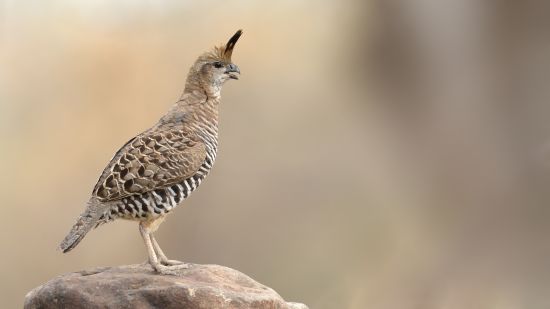- Philortyx fasciatus
Identification
18–21 cm
- Grey basic plumage
- White breast with black barring
Distribution
Arid western Mexico (south-western Jalisco to south-eastern Guerrero, Morelos and Puebla)
Taxonomy
This is a monotypic species[1].
Habitat
Dry forests, dry shrubland, weedy agricultural land and overgrown pastures.
Behaviour
Diet
Their diet consists of sunflower, sesame, thistle and thorn seeds, also croton beans.
References
- Clements, J. F., P. C. Rasmussen, T. S. Schulenberg, M. J. Iliff, T. A. Fredericks, J. A. Gerbracht, D. Lepage, A. Spencer, S. M. Billerman, B. L. Sullivan, and C. L. Wood. 2023. The eBird/Clements checklist of Birds of the World: v2023. Downloaded from https://www.birds.cornell.edu/clementschecklist/download/
- Handbook of the Birds of the World Alive (retrieved December 2014)
Recommended Citation
- BirdForum Opus contributors. (2025) Banded Quail. In: BirdForum, the forum for wild birds and birding. Retrieved 1 April 2025 from https://www.birdforum.net/opus/Banded_Quail
External Links
GSearch checked for 2020 platform.1




